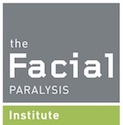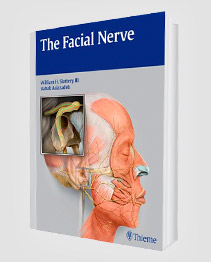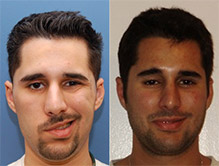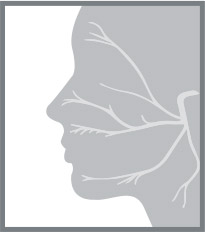Understanding how Bell’s palsy fits within the broader category of facial paralysis is essential for proper diagnosis and treatment. Facial paralysis refers to any loss of facial movement due to nerve damage, while Bell’s palsy is a specific condition that causes sudden facial paralysis, usually without a clear cause.
In this guide, we’ll look at how Bell’s palsy compares to other types of facial paralysis in terms of symptoms, underlying causes, and treatment approaches.
Understanding Bell’s Palsy and Facial Palsy

What Is Bell’s Palsy?
Bell’s palsy is a leading reason people suddenly lose movement on one side of their face. It usually shows up when the facial nerve gets irritated or swollen, often after a viral infection like the one that causes cold sores. When that nerve can’t properly send messages from the brain to the muscles, things like smiling, blinking, or even closing your eye can become difficult.
The symptoms tend to come on fast, sometimes within just a day or two. The exact reason isn’t always obvious, but there’s reassuring news: most people, about 90%, go on to make a full recovery.
What Is Facial Paralysis?
Facial paralysis (also called facial palsy) is a broader term that describes the loss of voluntary muscle movement in the face due to nerve damage or dysfunction. Unlike Bell’s palsy, which is idiopathic (meaning it arises without a known cause), facial paralysis can result from a variety of known conditions. These may include trauma, infections, tumors, neurological disorders, or strokes. Ramsay Hunt Syndrome, for example, is another viral cause of facial paralysis but is not the same as Bell’s palsy. In these cases, identifying the underlying cause is key to determining the right treatment.

Bell’s Palsy vs. Facial Palsy: Understanding the Differences
Bell’s palsy is a form of facial palsy, but not all facial palsy is Bell’s palsy. Facial palsy refers to any weakness or paralysis of the facial muscles caused by damage to the facial nerve. Bell’s palsy, on the other hand, is the most common type of facial palsy and typically occurs without a known cause, though viral infections are often suspected.
Think of facial paralysis as the umbrella term: Bell’s palsy is just one possible diagnosis underneath it. Bell’s palsy refers specifically to sudden-onset, idiopathic facial paralysis, often presumed to be viral. Facial paralysis, more broadly, refers to the symptom itself and can stem from many sources.
- Bell’s Palsy: A specific type of facial paralysis with no clearly identifiable cause, often linked to viral inflammation.
- Facial Paralysis: A general term describing facial nerve weakness, which can result from known conditions like injury, infection, stroke, or tumors.
Making this distinction helps guide diagnosis and treatment more accurately.
Bell’s Palsy vs Facial Palsy: Causes
Causes of Bell’s Palsy
Bell’s palsy is considered idiopathic, meaning its exact cause is unknown. However, many cases are believed to be triggered by a viral infection, especially herpes simplex virus (HSV-1), the virus responsible for cold sores. Other potential viral links include:
- Epstein-Barr virus
- Cytomegalovirus
- Influenza
These viruses may cause inflammation and swelling of the facial nerve, disrupting communication between the brain and facial muscles.
Causes of Facial Palsy
Facial palsy can result from a wide variety of known medical issues, including:
- Viral infections (e.g., herpes zoster, Lyme disease, Epstein-Barr)
- Bacterial infections (e.g., ear infections)
- Neurological conditions (e.g., multiple sclerosis)
- Stroke or brain tumor
- Facial trauma or surgical injury
- Congenital disorders
Each of these can damage the facial nerve, leading to either temporary or permanent muscle weakness on one or both sides of the face.
The Symptoms of Bell’s Palsy vs Facial Palsy
Bell’s Palsy
Bell’s palsy can really throw you for a loop. It influences many different things, not just about a drooping face. Knowing the signs will help you receive medical attention. Although these symptoms are typical of Bell’s palsy, they can also signal other illnesses, thus a formal diagnosis is needed. Injury, viruses, illnesses, and neurological anomalies can cause it. Facial weakness can make eating and communicating difficult.
Bell’s palsy usually appears suddenly, often within 48 hours. Common symptoms include:
- Sudden weakness or paralysis on one side of the face
- Drooping of the mouth or eyelid
- Inability to close the affected eye
- Loss of taste on the front part of the tongue
- Increased sensitivity to sound in one ear
- Dry eye or mouth on the affected side
- Headache or mild ear pain
Although these symptoms can be alarming, most people begin to improve within a few weeks.
Facial Palsy
The signs of facial palsy depend on its underlying cause but may include:
- Drooping on one or both sides of the face
- Difficulty closing the eye or mouth
- Drooling
- Reduced ability to smile, frown, or raise eyebrows
- Changes in tear and saliva production
- Altered taste sensation
- Headache or ear pain
When facial palsy results from a more serious condition (such as a tumor or stroke), symptoms may develop gradually and appear alongside other neurological signs.
Treatment Options
For Bell’s Palsy
Although Bell’s palsy can be a frightening condition, the good news is that numerous treatments exist to aid in recovery. Treatment aims to lower nerve inflammation, ease symptoms, and encourage the comeback of face muscular control. Let’s investigate the typical methods.
Medications: Corticosteroids tend to be the first drug used. Prednisone lowers facial nerve irritation, enhancing function. Antiviral corticosteroids can be prescribed for viral infections. Combining steroids and antivirals may work better. Ask a doctor about pros and cons.
Physical Therapy: Physical therapy teaches face muscle stretches and regulated movements to promote coordination and healing. Eye care measures to reduce dryness, corneal damage, and eye protection are also taught.
Surgical Interventions: Rare cases of Bell’s palsy may require surgery if conservative treatments fail if nerve damage is severe. Facial nerve decompression, nerve grafting, and muscle transfers require a trained surgeon to choose the appropriate treatment based on symptoms, cause, and health.
For Facial Palsy (Other Causes):
- Treatment depends entirely on the cause:
- Antibiotics for bacterial infections
- Surgical intervention to remove tumors or decompress nerves
- Rehabilitation and therapy for stroke or neurological disorders
- Ongoing management for chronic conditions like MS
Recovery Outlook
Bell’s Palsy
Bell’s palsy has a positive outlook with most people experiencing significant recovery within weeks or months. However, studies show that individual experiences vary due to age, initial paralysis, and general health. Studies show that 70% of those with the condition fully recover, 15% have near-full recovery, and 15% may experience long-term consequences.
Facial Palsy from Other Causes
Recovery depends on the underlying condition. Some causes (like trauma or tumor) may lead to permanent deficits if not treated early.
Long-term Facial Palsy Effects
Long-term sequelae of facial palsy, especially Bell’s palsy, include synkinesis, facial weakness, muscle stiffness, and tear production alterations. Proactive healing entails regular physical therapy and doctor visits to reduce long-term consequences and address new issues.
Recovery Factors
Several factors can affect Bell’s palsy or facial palsy healing. Among them:
- Age: Younger people recover better.
- Paralysis severity: Milder cases usually resolve rapidly.
- Medical Conditions: Diabetes and hypertension might slow healing.
- Early Correction: Starting medication, like steroids, soon after symptoms appear will improve outcomes.
Maintain moderate expectations and work together with your healthcare team to enhance healing. They can tailor advice and encouragement to your situation.

Facial Paralysis Psychosocial Effect
Facial paralysis, whether from Bell’s palsy or other causes, goes beyond symptoms. It can disrupt your thinking and behavior. How being unable to move your face impacts everything is important.
Emotional and Mental Health
Self-consciousness, anxiety, and sadness can result from facial paralysis. It can create loneliness and low self-esteem. Accepting these sentiments and finding support is vital; tools are available to help deal.Addressing these issues starts with understanding Bell’s Palsy symptoms.
Human Connections
Self-compassion, control, and assistance from support groups, therapy, and trustworthy friends and family can help facial paralysis sufferers cope with social isolation.
Support Systems
Facial paralysis can severely damage health. Support from family, friends, and therapists can provide encouragement, wisdom, and community. Meet others with similar concerns in a support group. Health can improve with expert help, support groups, and self-care.
When to See a Doctor
Early facial paralysis diagnosis and therapy will greatly affect recovery. See signs including sudden weakness, trouble closing one eye, drooling, and taste changes. Prevent infections, keep excellent health, and control your stress to start preventative actions. See the webpage for tips on self-defense. Perform now.
In Summary: Bell’s Palsy vs Facial Palsy
- Facial Palsy is a broad term describing weakness or paralysis of facial muscles due to nerve damage from any cause.
- Bell’s Palsy is a specific type of facial palsy, usually temporary and often linked to viral infection, with no other underlying medical explanation.
Understanding the difference between the two helps ensure timely treatment and a better chance of full recovery.
Request your consultation with Dr. Azizzadeh today
Call us at (310) 657-2203 to schedule an appointment.
Schedule a Consultation




